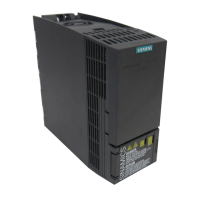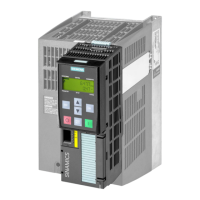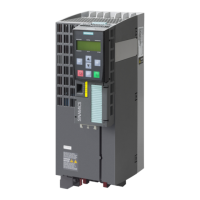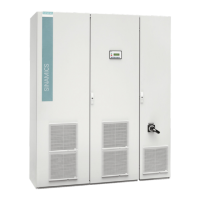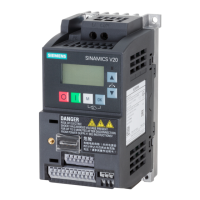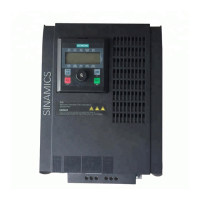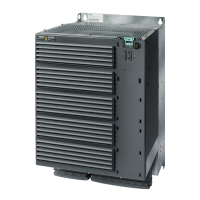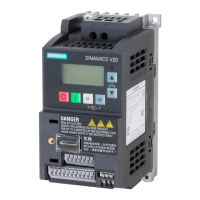8.21.2 DC braking
Overview
DC braking is used for applications where the motor must be actively braked, but where the
converter is neither capable of energy recovery nor does it have a braking resistor.
Typical applications for DC braking include:
• Centrifuges
• Saws
• Grinding machines
• Conveyor belts
DC braking is not permissible in applications involving suspended loads, e.g. lifting
equipment/cranes and vertical conveyors.
Requirement
The DC braking function is possible only for induction motors.
NOTICE
Motor overheating as a result of DC braking
The motor will overheat if you use DC braking too frequently or use it for too long. This may
damage the motor.
• Monitor the motor temperature.
• Allow the motor to adequately cool down between braking operations.
• If necessary, select another motor braking method.
Function description
With DC braking, a constant braking current ows through the motor. As long as the motor is
rotating, the DC current generates a braking torque.
The following congurations are available for DC braking:
• DC braking initiated by a control command
• DC braking when falling below a starting speed
• DC braking when the motor is switched o
Advanced commissioning
8.21Electrically braking the motor
SINAMICS G120C Converters
326 Operating Instructions, 02/2023, FW V4.7 SP14, A5E34263257B AK
